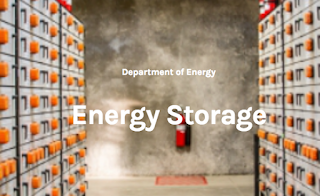Last week, CleanTechnica took note of some concerns that energy storage and renewables have enabled utilities to keep leveraging fossil fuels into the grid. Sure enough, here comes the US Department of Energy with a solution: a newly announced round of $30 million in funding for next-generation technology leading to batteries that can store electricity in bulk for at least 10 hours.
At that scale, energy storage can solve three problems at once: it can funnel more wind and solar into the grid, it can shrink reliance on coal baseload power plants, and it can push gas “peaker” plants out of the picture. Problem solved!
Why Exactly Is The Trump Administration Interested In Bulk Energy Storage?
By the way, 10 hours is just for starters. The new round of funding aims at systems that can shoot electricity into the grid for up to 100 hours, which puts nuclear power on even shakier ground than it is now (that’s a whole ‘nother can of worms).
The funding comes through the Energy Department’s ARPA-E (Advanced Projects Research Agency – Energy) office, which kickstarts high risk, high reward R&D. That means we taxpayers get the credit for pushing new clean tech into the market when private sector dollars lack the muscle. Group hug!
For those of you new to the ARPA-E topic, Congress breathed the office into life in 2007 during the last years of the Bush Administration, but it wasn’t funded until 2009 under the Obama Administration.
...
Secretary Perry himself pitched the 10-to-100 energy storage goal in a press release announcing the $30 million round of funding last week:
…At DOE, we are peering over the energy horizon and identifying the key technologies we need to support the power system of the future. These new storage options will offer us the opportunity to make the grid more resilient while enabling greater integration of our domestic energy resources.Got it. In case you’re wondering what “domestic energy resources” means to the Energy Department these days, that’s a good question. Though Perry’s statement doesn’t mention wind or solar integration specifically, elsewhere in the same press release it’s pretty clear that the focus is on wind and solar integration.
The background material for the funding announcement also hammers home the aim of enabling “a greater share of low-cost, intermittent sources of wind and solar in the future generation mix.”
Read more at Why the Energy Storage Problem Won’t Be a Problem for Long

No comments:
Post a Comment